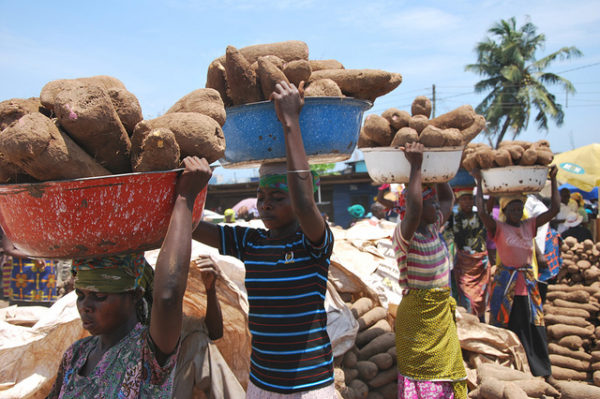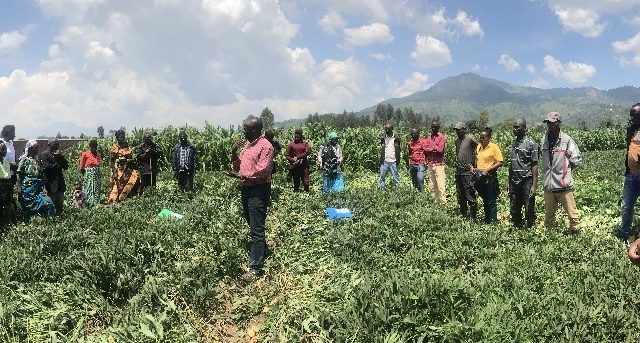Yams are a multispecies crop with a wide range of ploidies and rank eleventh among global food crops in both total production (49 MT) and food consumption in developing countries. Production is concentrated in tropical Africa (96%), mostly by smallholders.
Guinea yams, D. rotundata (white yam) and D. cayenensis (yellow yam), originated in Africa and account for most of the yam production; they are preferred for the organoleptic properties of the tubers.The water yam, D. alata, originated in Asia and has superior agronomic flexibility and wide geographic distribution.Yams are adapted to the tropics and subtropics and can be propagated by seed tubers or vine cuttings. Breeding objectives include high and stable tuber yields, resistance to pests and diseases (nematodes, viruses, anthracnose, and scale insects), tuber quality, ease of harvest and long storage, suitability to cropping systems and markets, tolerance to abiotic stresses, and textural and nutritional attributes. In addition to common research needs with other RTB, agronomic research on soil fertility management investigates the role of mycorrhizal fungi in yam mineral nutrition, while product development looks at functional properties required for products for household and industrial purposes.




